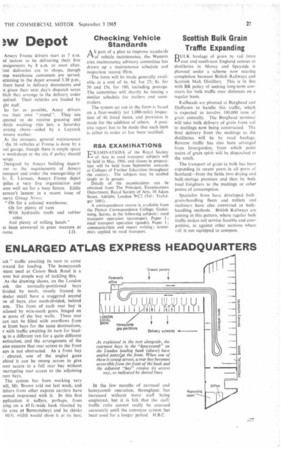ENLARGED ATLAS EXPRESS HEADQUARTERS
Page 29

If you've noticed an error in this article please click here to report it so we can fix it.
ack " traffic awaiting its turn to conic irward for loading. The honeycomb rstem used at Canon Beck Road is a ever but simple way of tackling this. As the drawing shows, on the London ank the normally-positioned bays livided by mesh, stoutly framed in ibular steel) have a staggered second nv of bays, also mesh-divided, behind hem. The front of each rear bay is aclosed by wire-mesh gates, hinged on le posts of the bay walls. These rear ays can be filled with overflows from le front bays for the same destinations, r with traffic awaiting its turn for loadig in a different van for a quite different estination, and the arrangement of the ates ensures that rear access to the front ays is not obstructed. As a front bay
cleared, one of the angled gates ehind it can be swung across to give ront access to a full rear bay without tterrupting rear access to the adjoining ront bays.
The system has been working very ell, Mr. Brown told me last week, and isitors from other express carriers have eemed impressed with it. In this first pplication it suffers, perhaps, from eing on a 45 ft.-wide bank (limited by ite area at Bermondsey) and he thinks 60 ft. width would show it at its best. In the few months of carousel and honeycomb operation, throughput has increased without more staff being employed, but it is felt that the staff/ traffic ratio cannot really be assessed accurately until the conveyor system has been used for a longer period. H.B.C.




























































































































































